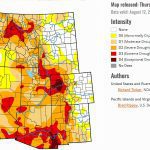- EPA retains hazardous substance listing for PFOA and PFOS (aka “forever chemicals”).
- Agency prepares new framework for future designations.
- Concerns remain about liability for municipalities and other “passive receivers.”
Monday, September 29, 2025 — The U.S. Environmental Protection Agency (EPA) announced on September 17, 2025, that it will retain the hazardous substance designation under the federal Superfund law for two of the most studied per- and polyfluoroalkyl substances (PFAS): perfluorooctanoic acid (PFOA) and perfluorooctanesulfonic acid (PFOS). These compounds, often referred to as “forever chemicals,” are known for their persistence in the environment and potential health risks.
Administrator Lee Zeldin explained that the EPA will proceed with a new rulemaking process to establish a uniform framework for future hazardous substance designations. This framework will fall under section 102(a) of the Comprehensive Environmental Response, Compensation, and Liability Act (CERCLA), also known as the Superfund law.
that the EPA will proceed with a new rulemaking process to establish a uniform framework for future hazardous substance designations. This framework will fall under section 102(a) of the Comprehensive Environmental Response, Compensation, and Liability Act (CERCLA), also known as the Superfund law.
Passive Receiver Concerns.
CERCLA imposes strict liability for entities that release hazardous substances into the environment. However, the law can also affect municipalities, water systems, and other organizations that never manufactured PFAS but may have received them in waste, feedstocks, or products. These entities are often referred to as “passive receivers.”
Zeldin noted that EPA continues to hear concerns from local governments and members of Congress about the costs of cleaning up contamination, which can ultimately be passed to taxpayers and ratepayers. He added, “EPA intends to do what we can based on our existing authority, but we will need new statutory language from Congress to fully address our concerns with passive receiver liability.”
Court Filing and Rule Implementation.
On the same day as the announcement, the Department of Justice submitted a court filing on behalf of EPA in ongoing litigation concerning the designation of PFOA and PFOS under CERCLA. The rule that became effective on July 8, 2024, remains in place. EPA stated it will continue to collect data on the costs and benefits of implementation.
Future Framework Rule
The forthcoming “Framework Rule” under CERCLA section 102(a) is expected to clarify how EPA evaluates costs and impacts when considering hazardous substance designations. This process will guide future decisions about other PFAS and potential new substances beyond those already listed under the Clean Water Act, Clean Air Act, Resource Conservation and Recovery Act, and Toxic Substances Control Act.
EPA has also launched the PFAS OUTreach Initiative, designed to connect directly with public water systems facing challenges in addressing PFAS. Through this program, the agency shares resources, funding information, and technical assistance opportunities with state, tribal, and local leaders.
FAQ
What are PFAS?
Per- and polyfluoroalkyl substances (PFAS) are a group of human-made chemicals widely used in products such as firefighting foam, nonstick cookware, and water-resistant clothing. They are often called “forever chemicals” because they do not break down easily in the environment.
Why are PFOA and PFOS significant?
PFOA and PFOS are among the most studied PFAS compounds. Research has linked exposure to possible health risks, including impacts on the liver, immune system, and reproductive health.
What is CERCLA?
The Comprehensive Environmental Response, Compensation, and Liability Act (CERCLA), commonly known as the Superfund law, gives EPA authority to respond to releases of hazardous substances and hold responsible parties liable for cleanup costs.
Who are “passive receivers”?
Passive receivers are entities such as municipalities, utilities, or businesses that did not create or manufacture PFAS but may have received them in products, feedstocks, or waste. These groups can face liability under CERCLA, which has raised concerns about cost burdens on communities.
What happens next?
EPA will continue implementing the existing hazardous substance designation for PFOA and PFOS while developing a new framework for evaluating future designations. The agency has stated it will provide technical assistance to Congress if lawmakers decide to clarify liability protections for passive receivers.




